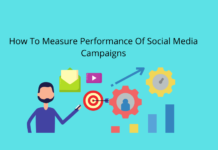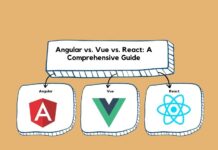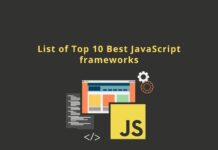Nowadays Search engine optimization (SEO) became very important for every webmaster in order to increase both the quality and quantity of website traffic, as well as exposure to your brand. In this article, you will learn a few practical strategies that you can use on your site by having an eye on this On-Page SEO Checklist 2019.
Also, if you don’t want to spend money to hire an “expert”, then go through this simple On-Page SEO Checklist infographic that you’ll love. Moreover, it will bring more search engine traffic to your website.

As we know that SEO is an essential aspect of blogging to take your blog on the first page. So, you have to know about the initial steps of On-page SEO and then try to master on it.
Google analyzes over 200 factors to rank your site and to remember each and every factor is difficult. Initially, it was really hard for me also to generate huge traffic and write articles that will SEO well.
Here I’ve listed a few points from On-Page SEO Checklist infographic to explain more about the topic:
On-Page SEO Checklist – Key factors |
|
1. Fresh and Unique Content
Like in the real world everyone wants to learn new, update by the latest trends and to get a unique knowledge, the content provided by you should be fresh, unique and comprise of case studies, stats in order to convey a wide knowledge about the topics or covers a topic in depth and more importantly, provides value to the reader.
Apart from unique content, make sure that word count of your amazing Content is over 2000 words.
READ MORE: An Introduction to International SEO- SEO Guide
2. Meta Title
In the On-Page SEO Checklist, this is the most important part. The title is displayed on search engine results pages (SERPs) which then lands you to the desired result pages.
Thus you need to create an attractive, short but concise title so that more people will click on it. Consequently, the more clicks your post gets, the higher it will rank. The key points to remember while creating a title is that use the focus keyword in the title (in the beginning) and in the (H1) heading.
3. Permalink Structure
Without a web address, we can’t find any specific post which we want to read or explore. So, Permalink is the web address used to link to your content. This URL to each post should be permanent and never change.
Making sure your URL is displayed correctly is an important on-page metric. Again, you should use your target keyword in the URL, and do not use special characters, symbols, brackets, commas, etc. within the actual URL. Instead, use dashes to make it user-friendly and related to content. Also, it must be shorter, cleaner, easier to read and to the point. Check here our Ultimate Guide to Permalink SEO.
Note* Google’s algorithm prefers URLs with 3-5 words.
4. Heading
In terms of quality and readability usage of headings throughout your content is very necessary. It is very easy to understand, the better text is better for users, which is better for your SEO.
Further, it will help to highlight the key point or key phase of your topic. Thus heading tags can be used to highlight various headings, sub-headings, and important points.
There are <h1> to <h6> tags are used to define Heading on a web document. These are used throughout the body of your text to divide your content.
| Heading Tags are: |
|
<h1>some text here</h1> <h2> some text here </h2> <h3> some text here </h3> <h4> some text here </h4> <h5> some text here </h5> <h6> some text here </h6> |
5. Keyword Density
There are a lot of SEO strategies and these strategies changes according to time, according to the algorithms of search engines. But, here is the one thing that remains constant and plays a vital role in SEO tactics or On-Page SEO Checklist.
For writing an SEO friendly content you need to research on keywords and stuff them in the content effectively. However, there are plenty of tools to find the right keyword, don’t rely on those tools too much. Before deciding about the right keyword, you should approach keywords with different strategies in mind and begin your research with the target market.
Also, think a little about voice search SEO while selecting the keyword. This will help you rank better in voice searches. We have a covered a list of factors that assist you to rank for voice search SEO.
Apart from these, you should keep the keyword density around 1.5% percent with a mix of LSI keywords.
As a marketer, you’re familiar with hundreds of tools to help you choose the best keywords for your biz., check out a few of them:
- Best 7 Free Google Keyword Research Tools.
- 5 Best Websites That Checks Google Keyword Rankings Accurately.
- List Of 10 Best Keyword Research Tool To Use In 2019
READ MORE: 19 Best Techniques That Increase Website Traffic With Advanced SEO
6. Images
Nowadays visuals attract more than content. isn’t it? Thus the traffic on the website is also extracted from it. Also, It helps a lot in driving traffic from image searches.
We recommend placing appealing and descriptive images in the post and the features image. Once you are done with the Image part place the images in a write section of the content and don’t forget to add keywords in the “image title” and the “alt text” that help to make your blog post more focused and targeted.
You can create quality, colourful and descriptive images but when it’s about uploading you often upload the images directly. No, don’t do such mistakes, speed is another factor that is very important in website ranking. Make sure, you’ve Compressed all the images. Also, Use a caching plugin. Use a CDN. For more about how to speed up your site, check out:
Check out:
- 5 Best WordPress Plugin for Image Optimization and Compression.
- How to enable GZIP compression for your WordPress site.
7. Internal Linking
Internal linking is the technique of Search Engine Optimization(SEO) to link one post to another. It can draw more traffic to your website and better rankings in the search engines.
Effective, link building helps in proper navigation, deliver relevant data to readers and bots.
As Google changes its algorithm time to time or advanced algorithm, this is still simple thing that you can do that give you an immediate boost in SEO metrics. Consequently, if your website has strong internal linking, Google crawler has an easier time to find new content that you publish and link to.
8. External Linking
Apart from interlinking, you can link out to external websites as well, which is also a great strategy to provide relevant information to your readers.
For external linking, do research work before sending your readers to others website. i.e external site should be trusted websites only, check the authority or popularity of a website. Also, you have the option to give a no-follow or do-follow link to that website.
Code Sample
<a href=”http://www.external-domain.com/”>Link Anchor Text</a>
Moreover, we can understand the power of external linking by simply a system of voting. We vote, people to stand out and become the head of the community. Similarly, search engines consider these links as third-party votes. Thus, external links are the most important source of ranking power.
READ MORE: Best WordPress Translation Plugins For Multilingual Website
Good Luck! 
















































